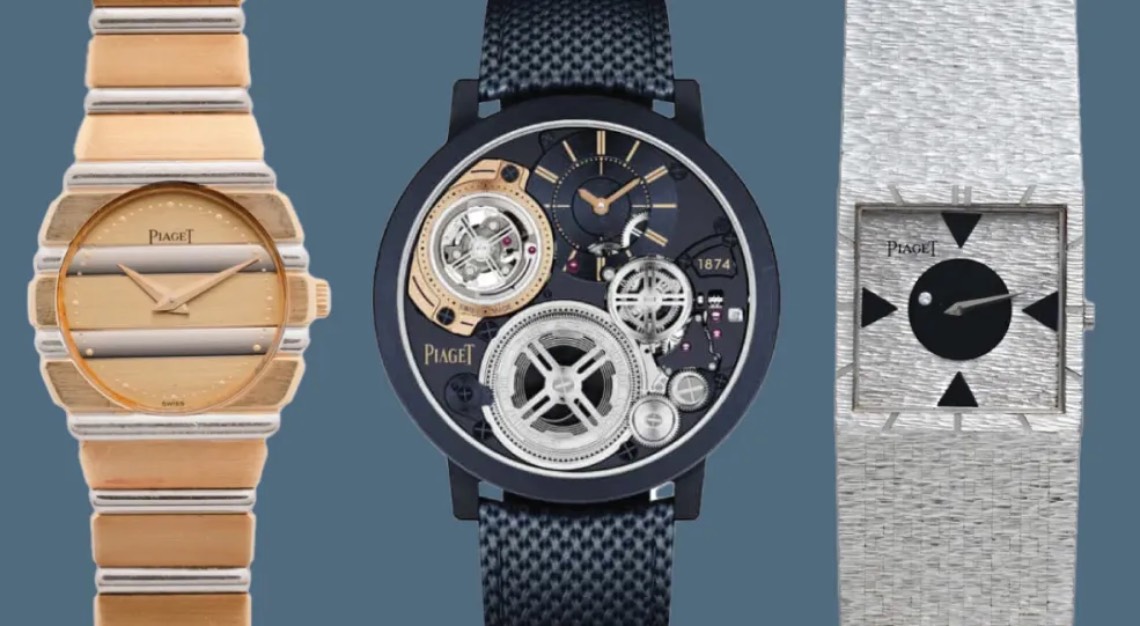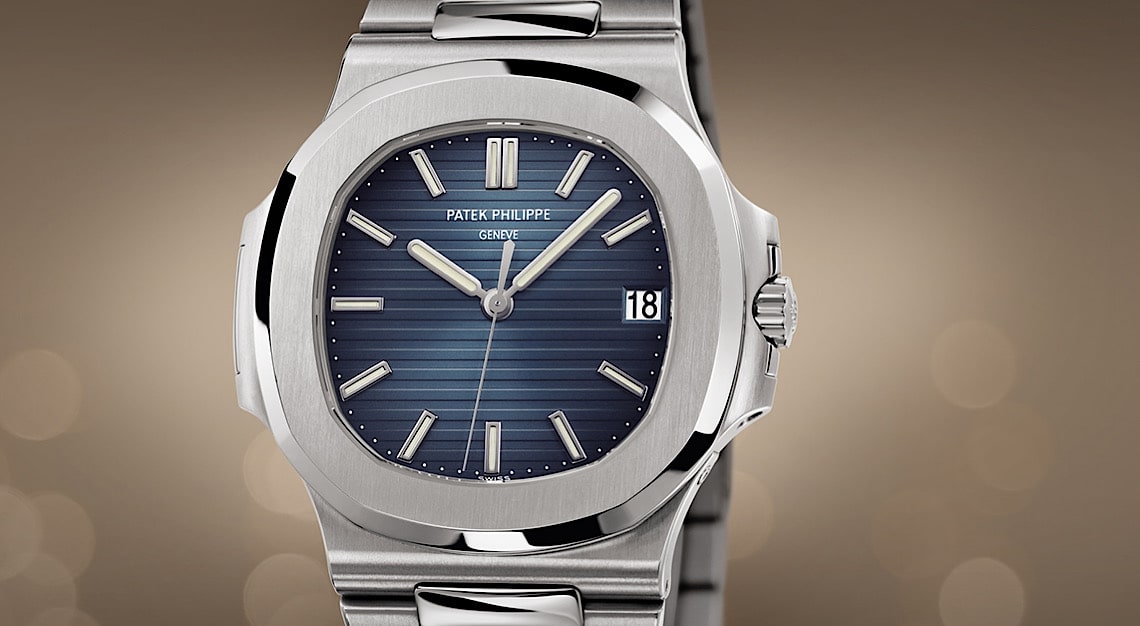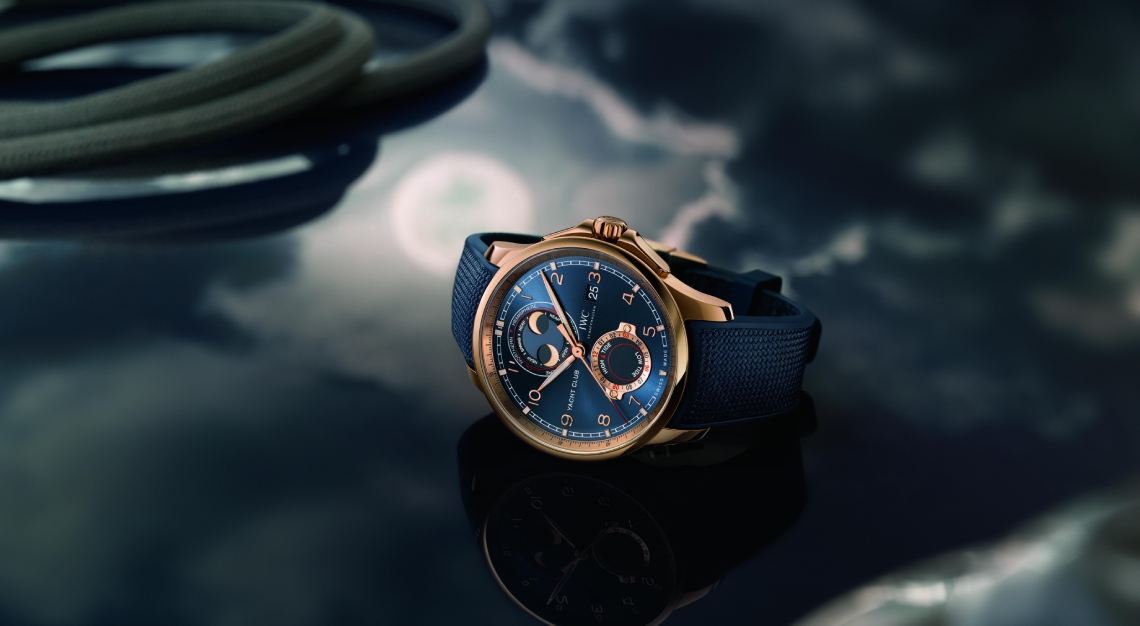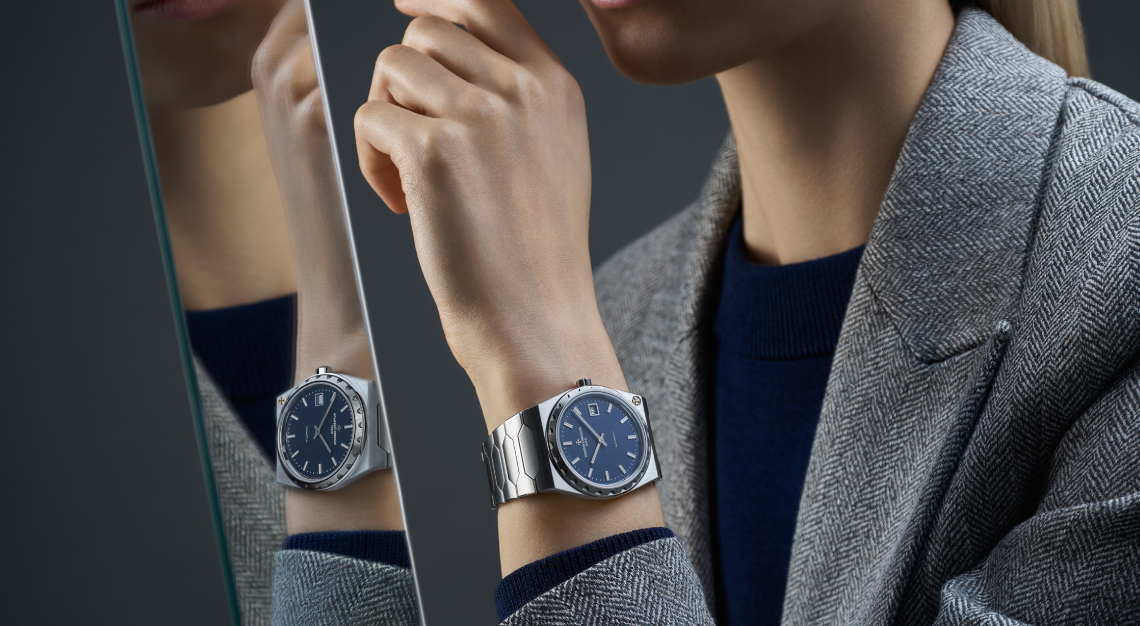Piaget’s ultra-thin watches and design-forward ethos have made the Swiss brand legendary among collectors
Few watchmaking concerns have been on the lips of as many collectors, casual buyers, and editors in 2024 as Piaget. Celebrating 150 years of operation, the distinctive Swiss maison has long made beautiful timepieces, but due either to the big birthday, or the emergence of the Polo 79, or its masterfully thin Altiplano line, the small watch trend—or, more likely, all of the above—Piaget has re-emerged recently as a sheer force of nature. Indeed, it’s nearly impossible to escape the gravity of Piaget’s wares both modern and vintage, with celebrities posing with them on red carpets around the world, and collectors waxing poetic about the merits of the Polo.
And with good reason. Piaget, though it produces both beautiful watches as well as stunning jewellery, is known particularly for its artful combination of both disciplines—one in which ultra-thin movements are paired with haute joaillerie in a manner few other makers can match. On the occasion of its sesquicentennial, let’s examine together the history of this most fascinating of maisons.
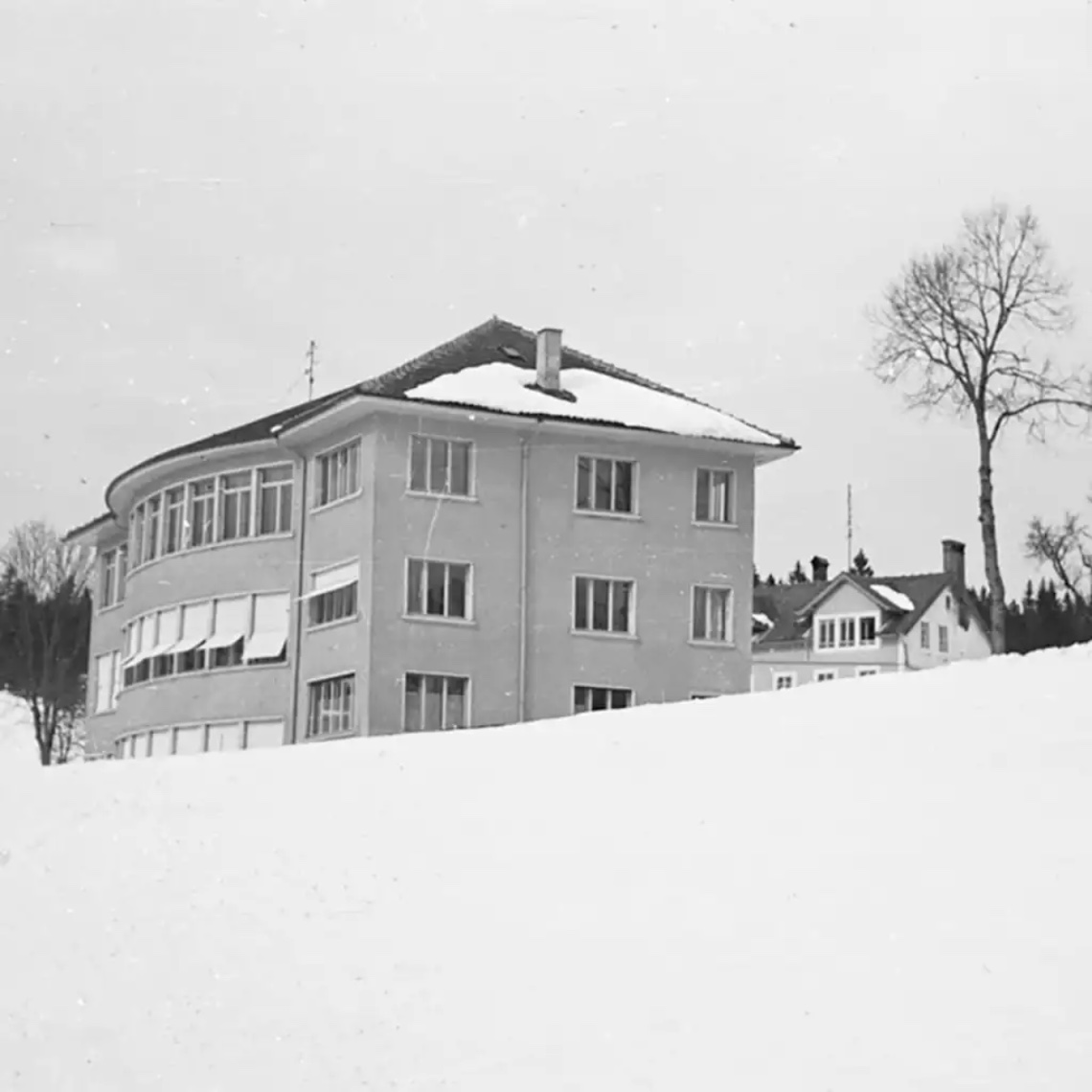
In the beginning
Like many older watchmaking concerns, Piaget was founded as a family business by an enterprising young Swiss—in this case, 19-year old George-Édouard Piaget. George-Édouard set up shop in La Côte-aux-Fées, in the Swiss Jura, in 1874 and began crafting clock and pocket watch movements with skill and precision. Soon after his son Timothée took over the small concern in 1911, he expanded into wristwatch movement production, which began taking over market share from pocket watches following the First World War. (Pocket watches were still in vogue through the 1940s, however—the maison’s first timepiece was in fact a pocket watch, produced in 1926.) In 1943, during the midst of the Second World War, “Piaget” was trademarked—a milestone that preceded the founding of a new manufacture in La Côte-aux-Fées in 1945. In 1946, Piaget attended its first Swiss Watch Fair, known later as Baselworld.
The first ultra-thin movements (1950s)
Piaget wouldn’t remain solely a movement producer for long: Brothers Gérald and Valentin, the third generation of the Piaget family to run the business, oversaw the development and release, in 1957, of the groundbreaking Calibre 9P, a 2mm-tall hand-wound, ultra-thin movement. Hot on the heels of this exciting development, in 1960 the brand released the micro rotor-powered, 2.3 mm-tall Calibre 12P, the thinnest automatic movement in the world. Rather than supply these movements to other watchmakers, the maison capitalised on its own ingenuity: Opening Salon Piaget in Geneva, the company began crafting precious-metal housings for its ultra-thin movements that combined jewellery making and horology in exquisite form. And, importantly, Piaget kept these ultra-thin 9P and 12P movements to itself, offering exclusivity and elegance unlike any other watch brand.
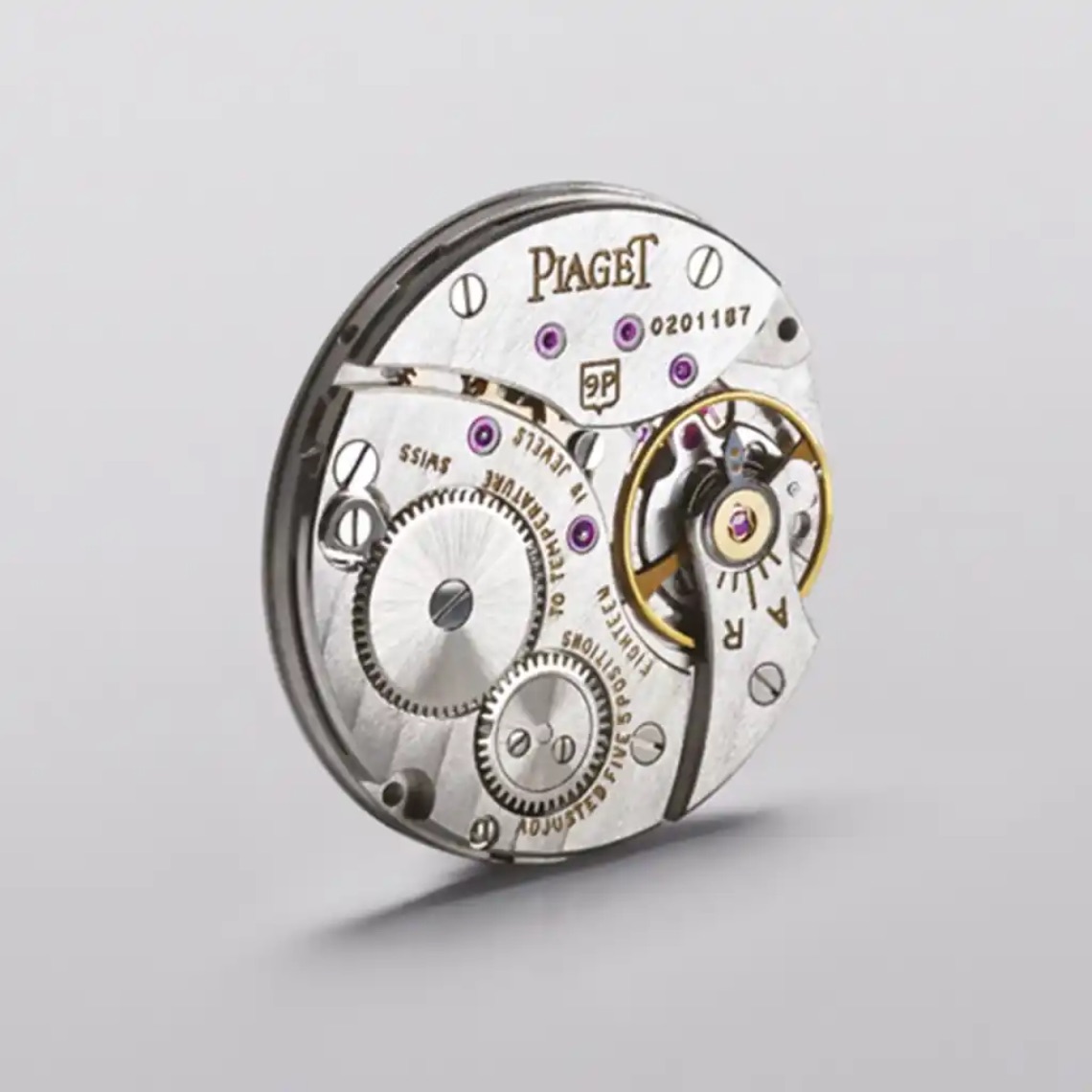
High society (1960s)
‘By 1963, Piaget was supplying its sumptuous, ultra-thin gold watches to the world’s rich and famous: Elizabeth Taylor, Sophia Loren, and Jackie Kennedyall wore dazzling Piaget watches with precious-metal cases and semi-precious stone dials; Andy Warhol, ever the consummate collector of beautiful things, owned several Piaget timepieces. Coin watches, ring watches, and brooches and other jewellery also entered the collection, all of which took advantage of the brand’s rare vertical integration that allowed it to smelt its own gold. (Piaget even offered its clients watch and jewellery customisation services.) In an interesting precursor to the collaborative and brand ambassador culture of the 2010s and 2020s, Piaget partnered with Salvador Dali as early as 1967, attaching the artist’s name to a watch collection.
Quartz and the Piaget Polo (1970s)
As the Quartz Crisis took hold in the 1970s, family-owned Piaget was nimble enough to read the writing on the wall: Signing on with a consortium of Swiss watch brands, it helped develop the electronic Beta 21 movement, fitting it within elegant, stepped-case dress watches. However, the Beta 21 did not conform to the maison’s ultra-thin modus operandi, so in 1976, Piaget launched the Calibre 7P, a quartz-powered movement of its own design.
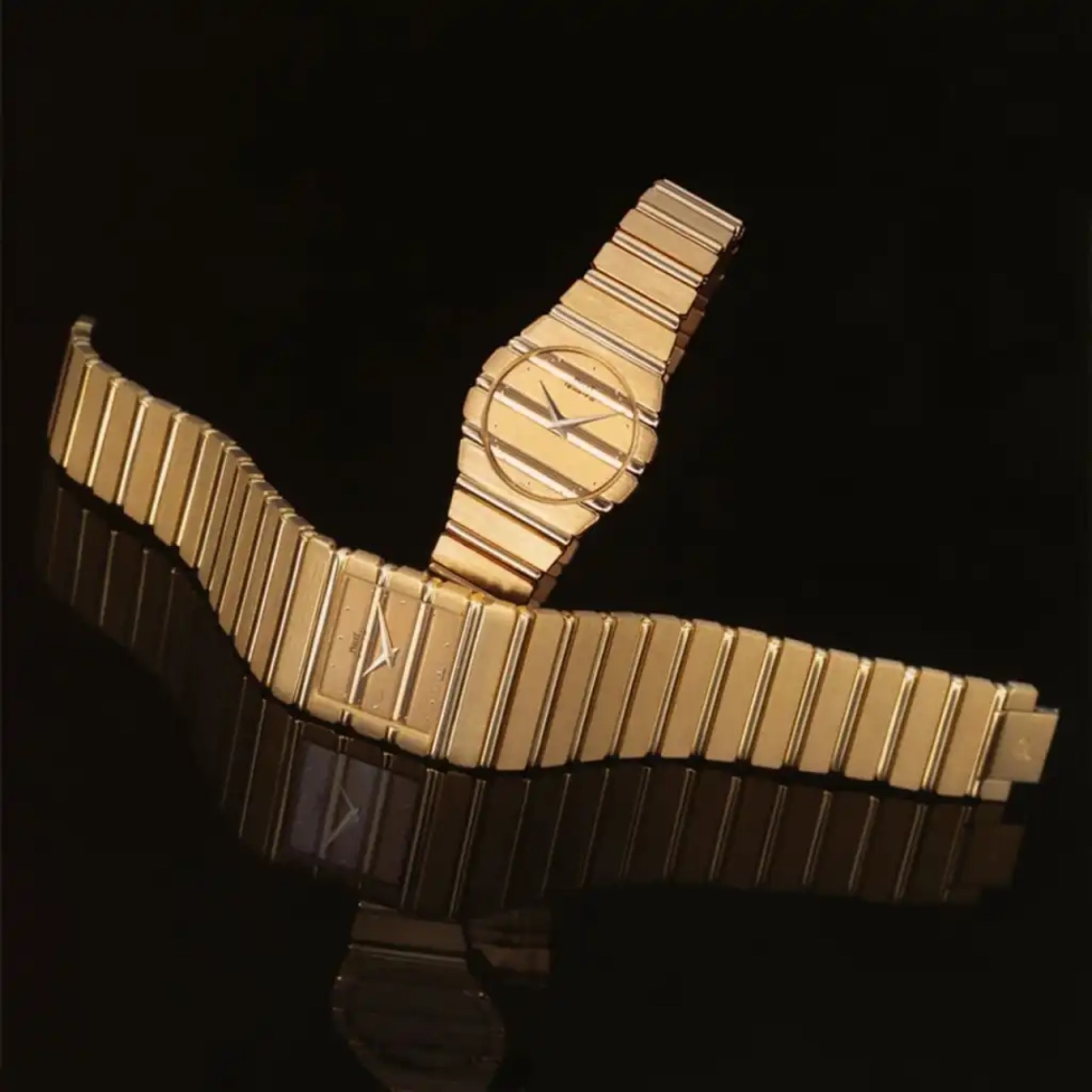
Meanwhile, while Gérald Genta was designing the Royal Oak for Audemars Piguet and the Nautilus for Patek Philippe, Piaget sensed it needed its own luxury sports watch contender. Developing a precious-metal timepiece with an integrated bracelet, it outfitted its new ultra-thin “jewellery watch” with the new 3.1mm-thick Calibre 7P. When the maison’s agent for the Americas insisted that a watch needed a name in order to succeed—previously, Piaget watches merely had reference numbers—it decided upon the “Polo,” launching it in 1979.
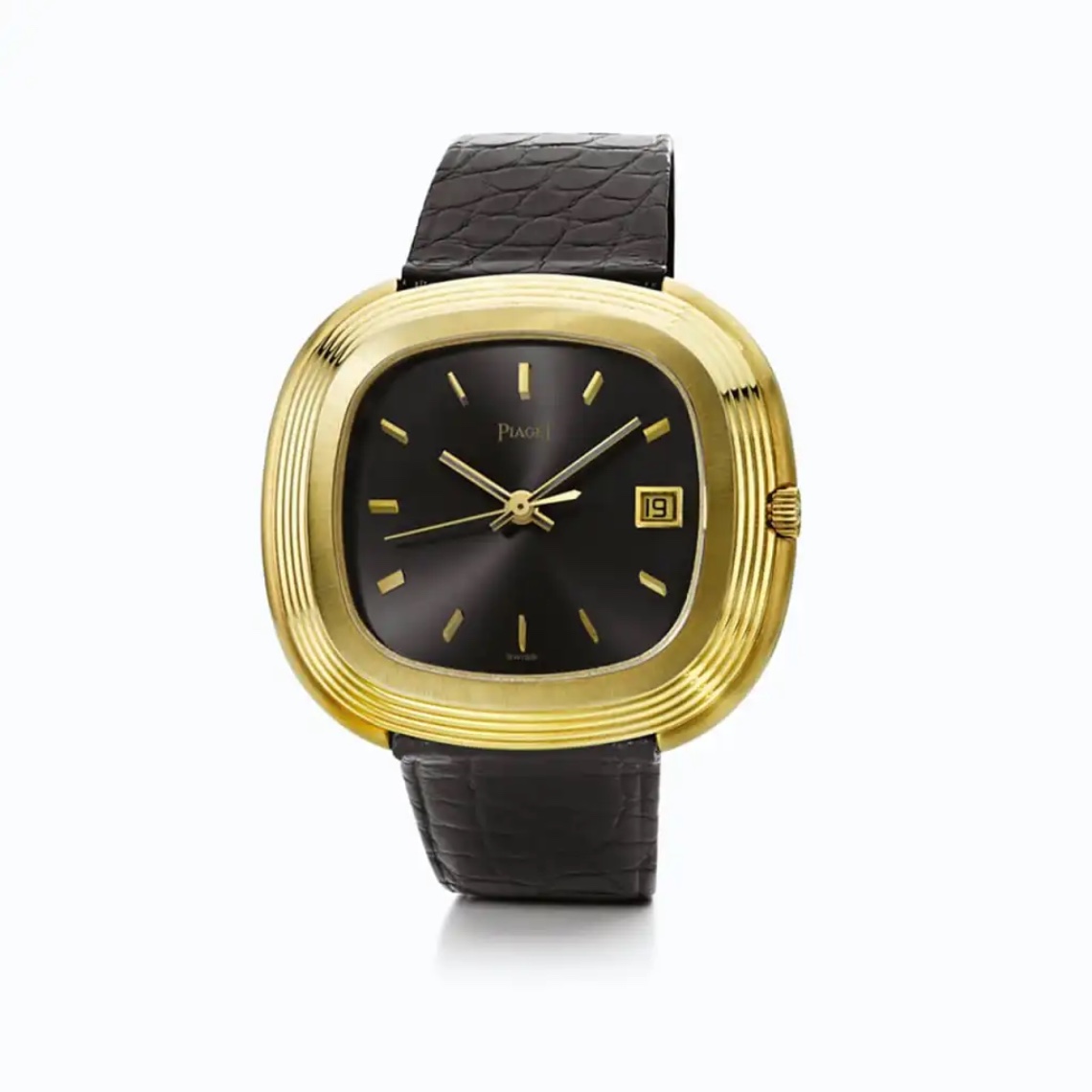
Containing between 132-136 grams of gold, this was a model that put the “luxury” in “luxury sports watch.” Indeed, while quartz technology was putting entire watchmaking concerns out of business, it was helping Piaget thrive. At the same time, Yves Piaget, a fourth-generation family member and trained gemologist, had taken over the company’s leadership; his “Piaget Society” gatherings brought celebrity clients together with other high rollers to cement the Piaget name in the minds of the well-to-do.
Modern Piaget (1980s – 2000s)
Even so, with consolidation beginning to take hold in the industry, the Piaget family sold the business to Vendôme Group in 1988, which would later become known as Richemont. It continued to make the Polo until roughly 1990, by which point it had produced roughly 4,000 to 6,000 examples of what was, for the time, an extraordinarily expensive timepiece. (Beginning MSRP was around US$20,000, or roughly US$80,000 today.) The 1990s themselves saw the launch of several new collections, including Possession, Limelight, Tangara, and Miss Protocole. By 2001, Piaget opened a new atelier in Plan-les-Ouates, where watchmaking and jewellery making professionals gather to design new models and collections. (Movements are still made in La Côte-aux-Fées.)
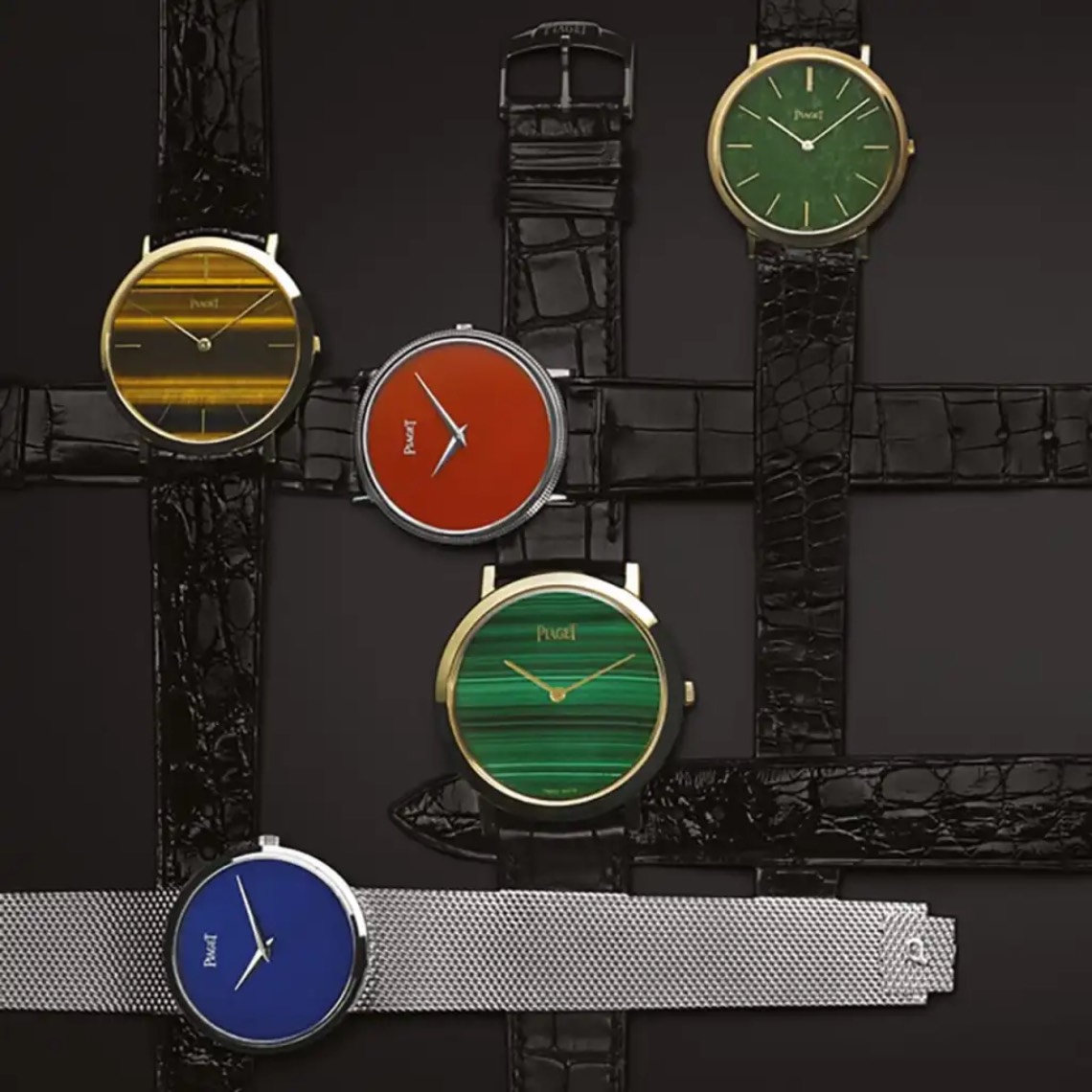
Record Setting (2010 – present)
In 2010, Piaget celebrated the 50th anniversary of the ultra-thin automatic Calibre 12P by releasing a new collection that broke two world records—that of the thinnest automatic movement in the world (2.35mm) and the thinnest automatic watch in the world (5.25mm)—in the form of the Altiplano, named for South American plains that informed the case shape. Measuring 43mm, this first Altiplano would prove a watershed design for the maison, spearheading the way for a succession of thinner and thinner pieces that merged cutting-edge watchmaking and design in a manner unmatched by perhaps any other watchmaker save Bulgari.
Continual refinement would follow: The Altiplano 900P, released in 2014, claimed the title as the then-thinnest mechanical watch in the world at just 3.65mm tall. Meanwhile, the manually-wound Calibre 670P—a 4.6mm-tall, tourbillon-equipped movement which Piaget likewise housed within an Altiplano case — debuted in 2017. One year later, the experimental Altiplano Ultimate Concept claimed the title as the world’s thinnest wristwatch at just 2mm tall. (Though this record has since been beaten by Bulgari—then Richard Mille, then Bulgari again—Piaget outfitted the “A.U.C.” with a flying tourbillon in 2024 while maintaining the impressive 2mm thickness, thus clinching the title of world’s thinnest tourbillon-equipped wristwatch.) In order to achieve this impressive feat of watchmaking, Piaget integrated case and movement into a single component.
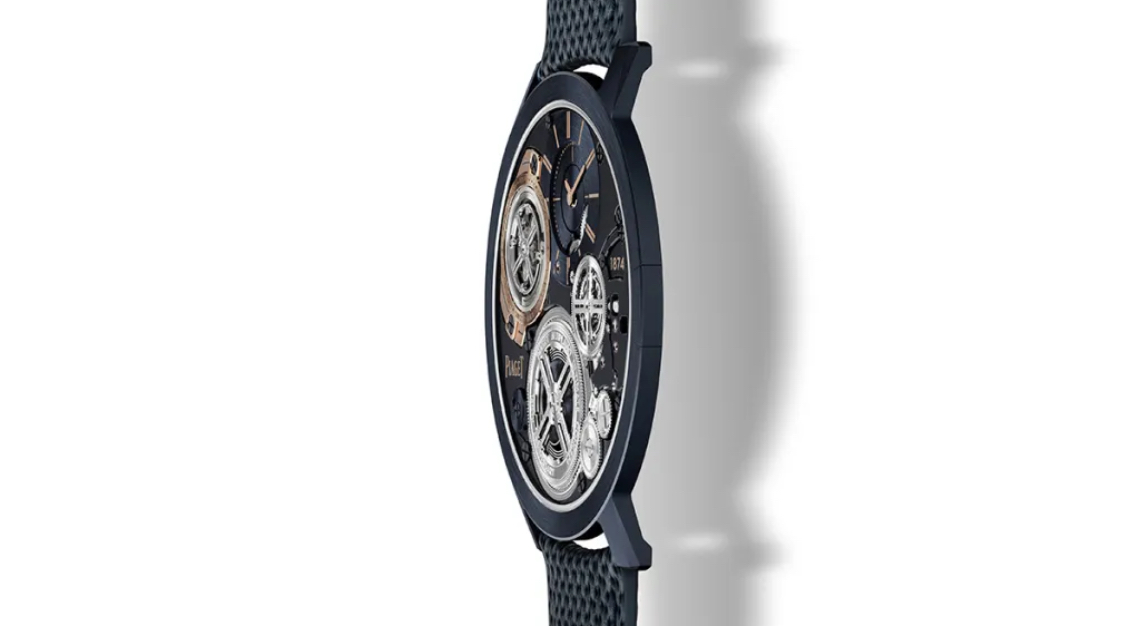
The current landscape
Let us rewind a moment. Back in 2016, Piaget reinvigorated the Polo with the introduction of the “S” collection, the first Polo iterations made in stainless steel. Fitted with manufacture calibers, they retailed for far less than their competitors from the likes of Audemars Piguet and Patek Philippe, and paved the way for the expansion of a collection that would allow Piaget to compete in the modern luxury sports watch market. But the maison didn’t ignore its heritage either: Earlier this year, it released the Polo 79, a 38mm yellow gold reissue of the watch that kept the brand competitive during the Quartz Crisis. Containing nearly 200g of gold and powered by the ultra-thin Piaget Calibre 1200P1—an automatic movement with micro-rotor—it retails for US$73,000.
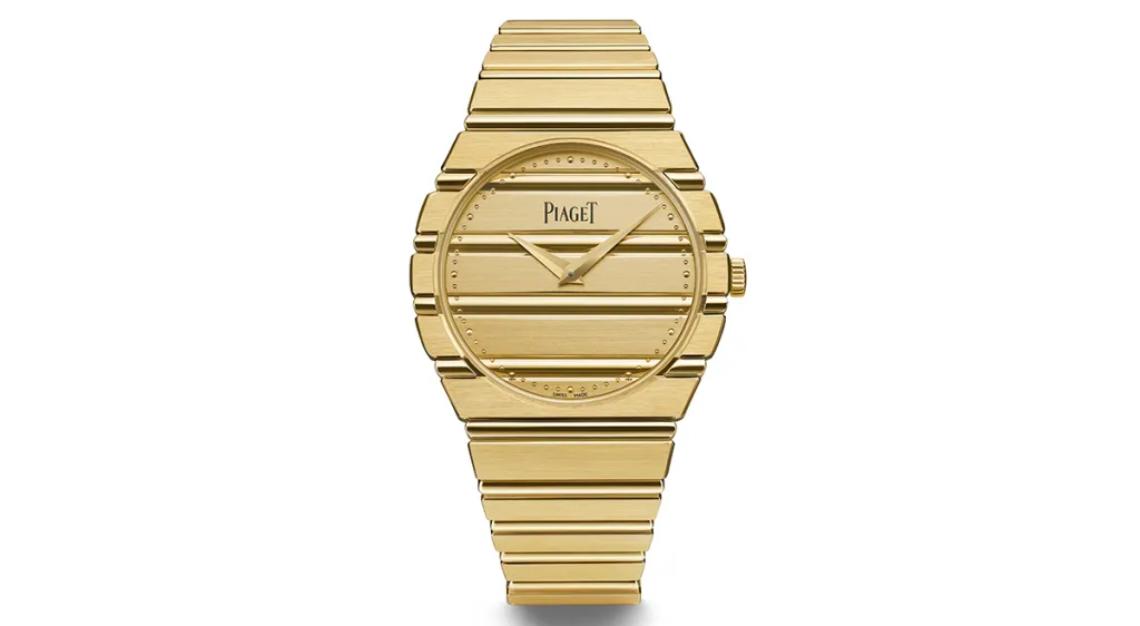
As of this writing, a sort of Piaget fever has taken hold of the watch market. In addition to dedicated brand ambassadors such as Michael B. Jordan, stylish men such as Lil Nas X and Usher have worn older Piaget pieces to galas, awards ceremonies, and debuts. Vintage and pre-owned dealers such as Analog:Shift and Wind Vintage are stocking or selling precious-metal Piagets fitted with semi-precious stone dials—and what’s most surprising is that it’s men who are largely springing for these dainty, colorful pieces, many of which were made for womens’ wrists. With its eyes set firmly on the future of ultra-thin watchmaking via Altiplano, and collectors’ interests set firmly in the past via the value-laden, colorful Polo and Emperador watches of the 1960s, ‘70s, and ‘80s, there’s no doubt that Piaget has taken over the horological zeitgeist.
The only pertinent question at this point is: What’s next for Piaget?
This story was first published on Robb Report USA. Featured photo by Analog:Shift and Piaget
